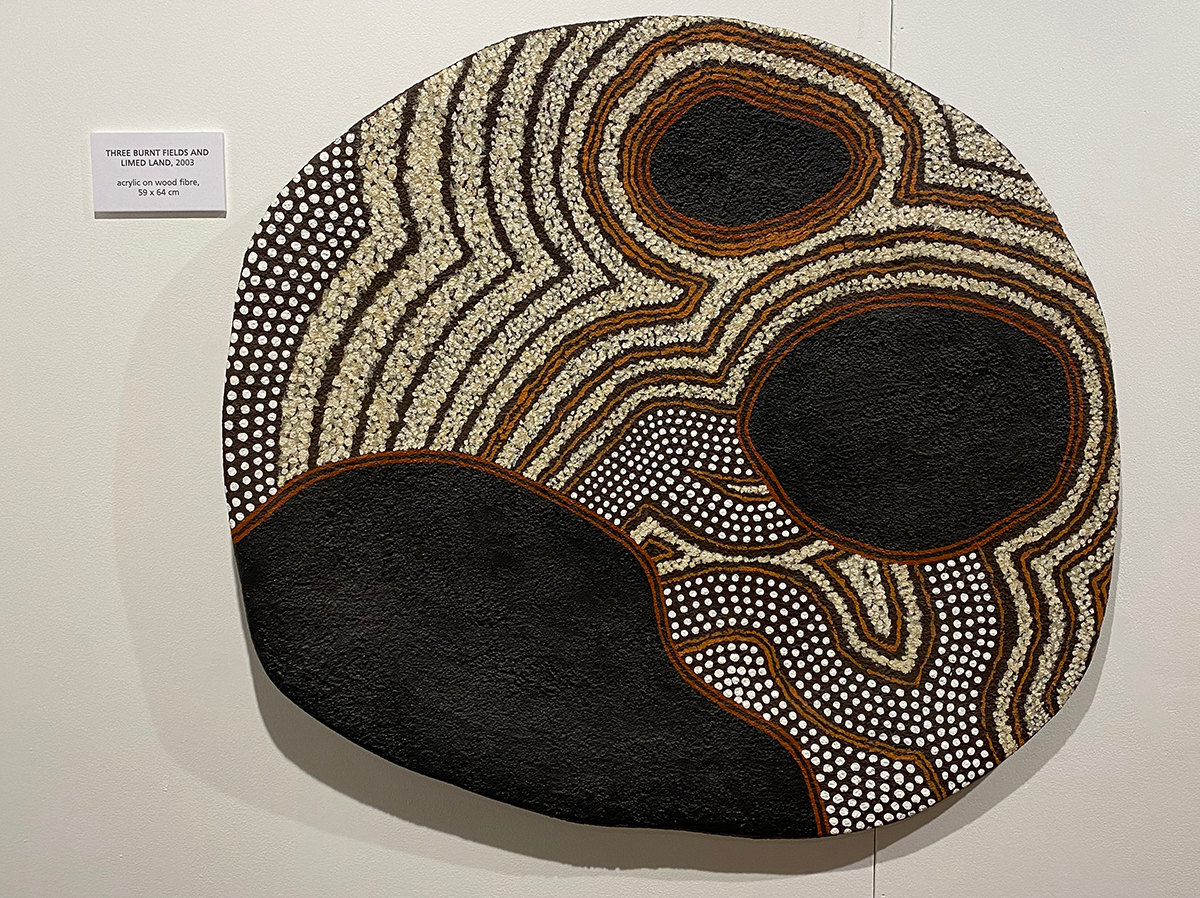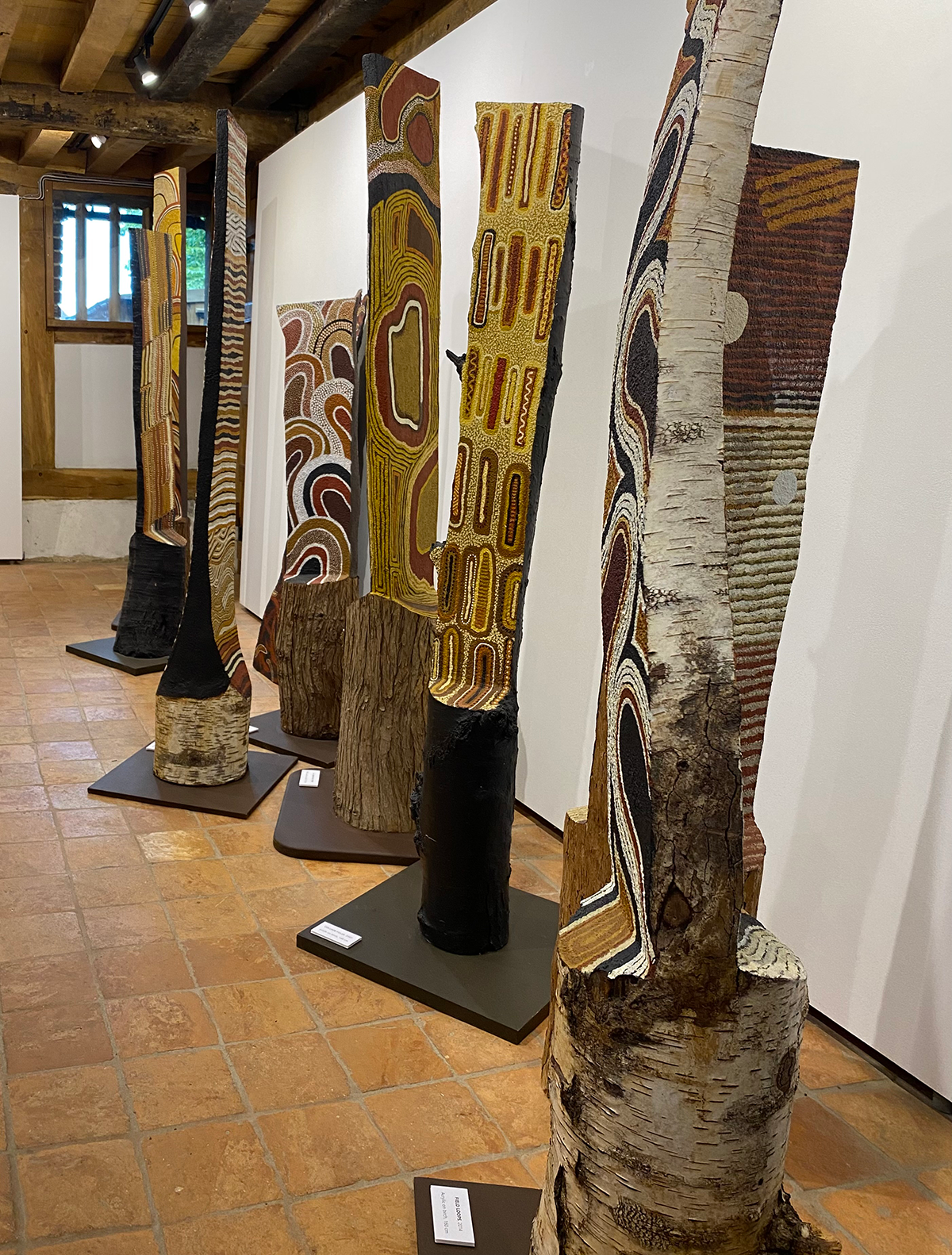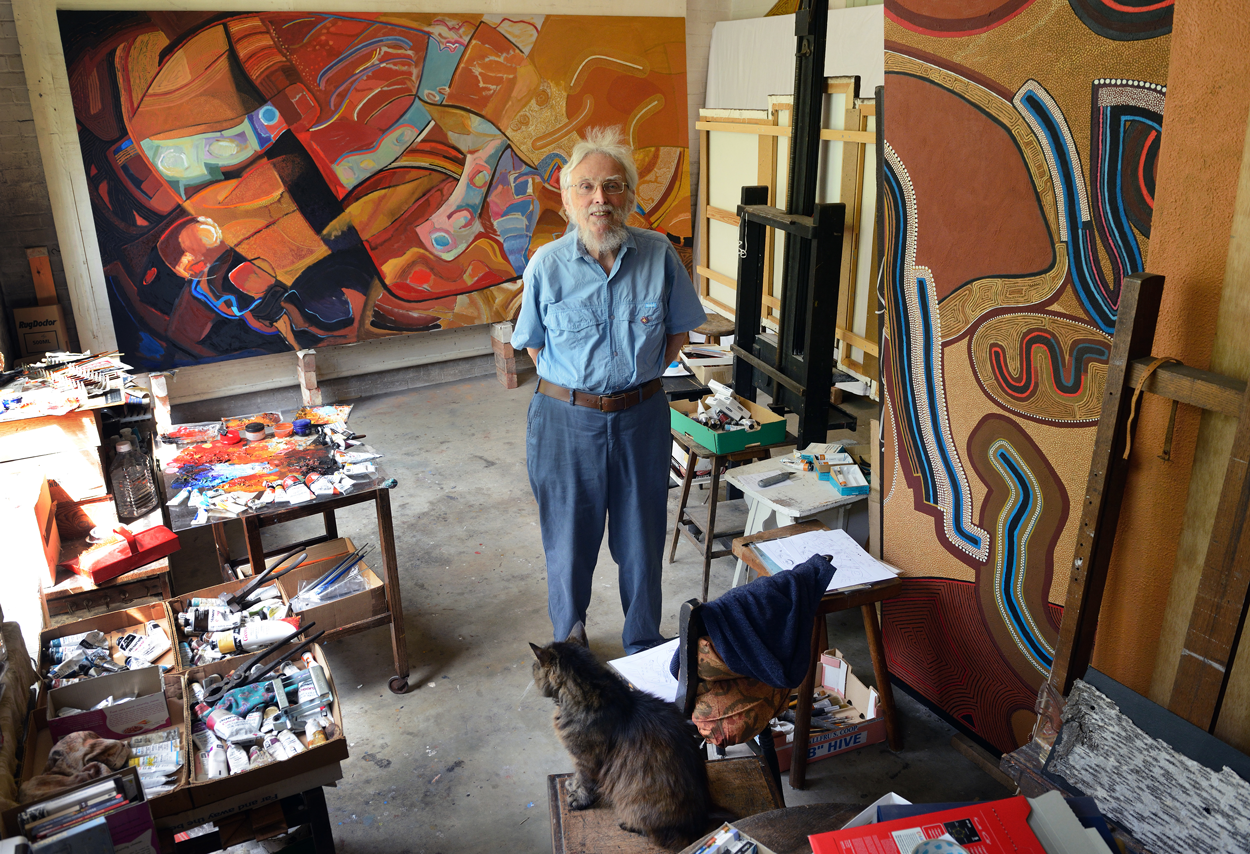
As I drive towards the Weald & Downland Museum the road along the ridge of the South Downs through the Goodwood estate affords an aerial view of the Sussex landscape reminiscent of one of John Hitchen’s landscapes. His latest exhibition Wood, Sand and Stone is currently on show in the museum’s 17th century Longport Gallery.
This is the first exhibition by Sussex artist, John Hitchens, to explore his paintings based solely on natural materials and their interactions between space, form and nature. It includes visually stunning 360 degree landscapes Painted Wooden Uprights painted in an earthy palette.
It further presents a selection of new paintings on stones, and earlier works using layers of locally sourced sand. All these works use the natural materials available to the artist around his Sussex home.
The natural materials of the intimate 17th century oak framed Longport Gallery work in concert with the natural materials out of which the works on display are born. Many of these three dimensional paintings combine the abstract with the naturalistic. There is something of the ancient in their expression of the Sussex landscape and they are curated in an imaginative way, displayed in old museum cabinets like a series of revered archaeological finds.

John Hitchens’ paintings are concerned with the patterns and rhythms of the landscape.
Aerial photography over the South Downs and a love of maps with their contours have provided inspiration for his increasingly abstract landscapes over the last twenty years. Take Three Burnt Fields and Limed Land painted in 2003. Its forms are reduced to a series of lines, dots, circles and patterns which provide motifs for the shapes created by ploughing and harvesting. Stubble was the origin of the dots and the black areas in the compositions recall burnt stubble, a sight no longer part of our landscape. Many of the works are textural, the earth hues painted on a base of sieved sawdust bound together with PVA. As you stop and stare subtle details reveal themselves. They reflect our human relationship with the land and our influence on the landscape.
The forms relate to one another in the method of their execution, bringing together the artists’ close observation of the natural world, collected objects, and an appreciation of traditional materials and craftsmanship.
John Hitchens is one of our nation’s leading landscape artists. Don’t miss Wood, Sand and Stone at the wonderful Weald & Downland Museum. To find out more visit www.wealddown.co.uk/whats-on/exhibitions.
